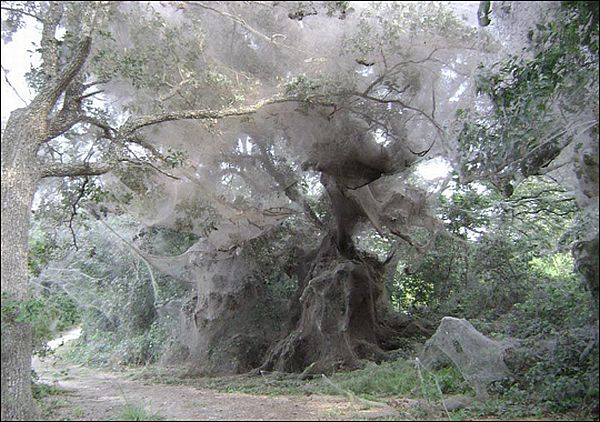
I have always been petrified of spiders, their cannibalistic nature and appearance gives me the creepy-crawlies. Do you know as soon as baby spiders are born they survive by eating their siblings? Nevertheless, for once they seem to have come together in harmony to feast on a seemingly endless supply of food.
At Lake Tawakoni State Park, in Wills Point in Hunt County, about 45 miles east of Dallas the spiders have weaved a web covering almost 200 yards along a trail. However, generally spiders have separate, distinct webs, this coming together is due to the prime feeding conditions created for the spiders because of heavy rains. The webby creepy canopy almost covers a pond. The larger the web, the more flies and bugs get stuck, providing abundant food supply for the spiders.
The massive web brought about much bug buzz when it was first discovered in August. Entomologists are still wondering as to whether webs were constructed by social cobweb spiders, which work together, or perhaps a mass dispersal where the arachnids spin webs to spread out from one other.
What have they finally concluded?
While research is still carrying on entomologists now believe thousands of spiders from different species worked together to make the huge web Together, they’ve built and rebuilt a web that has caught countless bugs and the attention of people nationwide. Allen Dean, an entomologist at Texas A&M University in College Station, helped identify them, spiders from 12 families, with the most prevalent being from the Tetragnathidae family. Identified spiders were funnel web weavers, sac spiders, orb weavers, mesh web weavers, wolf spiders, pirate spiders, jumping spiders and long-jawed orb weavers. Do check out the video and gallery!
Read


